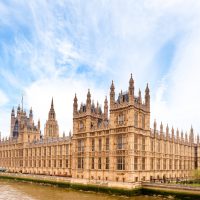
The Lords proposed to set out the meaning of “relevant building” to define which properties leaseholder protections applied to. Lords entered a clause for this to mean any self-contained building, or self-contained part of a building, in England that contains at least two dwellings.
This was amended by MPs to refer to buildings at least 11 metres, or five storeys high.
During the Parliamentary debate on Wednesday, Stuart Andrew, minister of state for housing, said the government did not agree with extending protections to buildings below 11 metres.
He added: “The department is aware of a handful of low-rise buildings where freeholders have been commissioning such works and we are addressing such buildings on a case-by-case basis, but we must restore proportionality to the system.
“There is no systematic risk of fire with buildings below 11 metres. Low-rise buildings are therefore unlikely to need costly remediation to make them safe. Lower-cost mitigations such as fire alarms are likely to be far more appropriate and proportionate.”
MP Stephen Doughty asked what advice would be given to leaseholders who felt they had been wrongfully charged for unnecessary works.
Andrew replied: “Freeholders and landlords should not be commissioning costly remediation in buildings below 11 metres except in exceptional circumstances, which is where there is no more proportionate option available. They certainly should not be pointing to old EWS assessments to justify those costs.
“Given the small number of buildings involved, a blanket legislative intervention bringing hundreds of thousands more buildings into scope to deal with an issue affecting just a handful of buildings would be entirely disproportionate.”
MP Hilary Benn then asked why shorter buildings would not be included, if the government acknowledged there was no problem with properties below 11 metres.
Andrew said the government wanted to make sure it got it right and would continue to assess the situation.
Some 318 MPs voted for the government’s update to not include buildings under 11 metres.
Other amendments
Most of the amendments made by Lords were either agreed to or changed.
The only amendment which was wholly rejected by MPs was a proposal requiring the Building Safety Regulator to carry out a series of safety reviews within a certain timeframe.
The Lords initially inserted a clause stating that within two years of the bill coming into force, the Building Safety Regulator should conduct and publish an assessment of the benefits and costs to measures such as fire suppression provisions and the safety or stairwells and ramps in residential buildings.
This was changed to increase the time to three years.
Andrew said the change provided “clearer drafting and a more practical and pragmatic approach”, and reflected the time needed to carry out these reviews alongside the regulator’s other functions.
The Bill will return to the House of Lords on 26 April.















